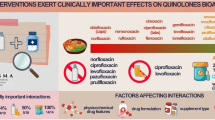Summary
Drugs are usually given orally. They are not absorbed to any extent from the stomach but may be absorbed very rapidly from the small intestine. Thus factors influencing the rate of gastric emptying may alter the rate of absorption of most if not all orally administered drugs. Food, hormones, posture, peritoneal irritation, severe pain, gastric ulcer, diabetes and other metabolic diseases, as well as drugs such as alcohol, anticholinergics, narcotic analgesics, ganglion blocking drugs, antacids and metoclopramide all influence the rate of gastric emptying and they will, in turn, change the rate of absorption of another drug.
In most instances, increasing the rate of gastric emptying and gastro-intestinal motility increases the rate of absorption of a drug but, for digoxin and riboflavine, increased gastrointestinal motility is associated with a decrease in the rate of absorption. Delayed drug absorption due to altered gastric emptying usually results in therapeutic failure, especially if the drug has a short biological half-life. At present it is not possible to predict accurately the magnitude and clinical relevance of all drug absorption interactions.
Similar content being viewed by others
Author information
Authors and Affiliations
Rights and permissions
About this article
Cite this article
Nimmo, W.S. Drugs, Diseases and Altered Gastric Emptying. Clin-Pharmacokinet 1, 189–203 (1976). https://doi.org/10.2165/00003088-197601030-00002
Published:
Issue Date:
DOI: https://doi.org/10.2165/00003088-197601030-00002




